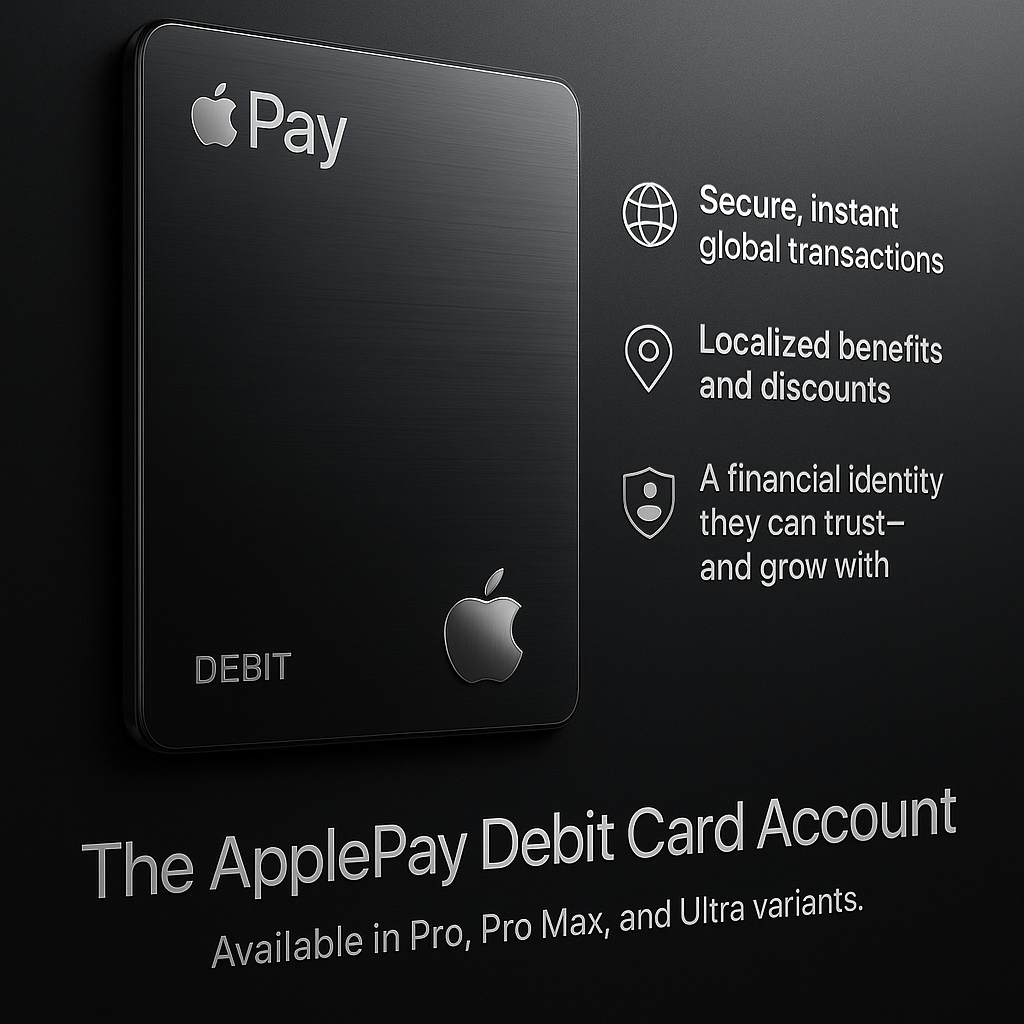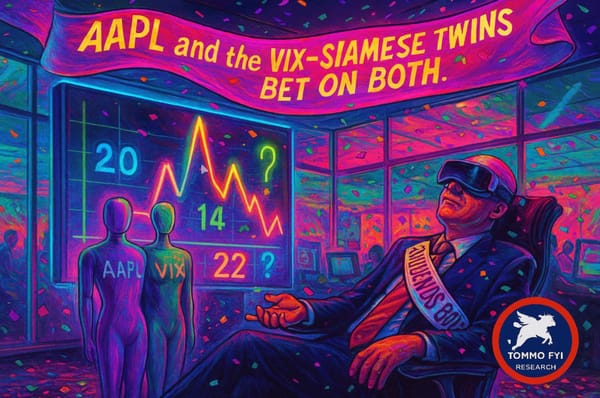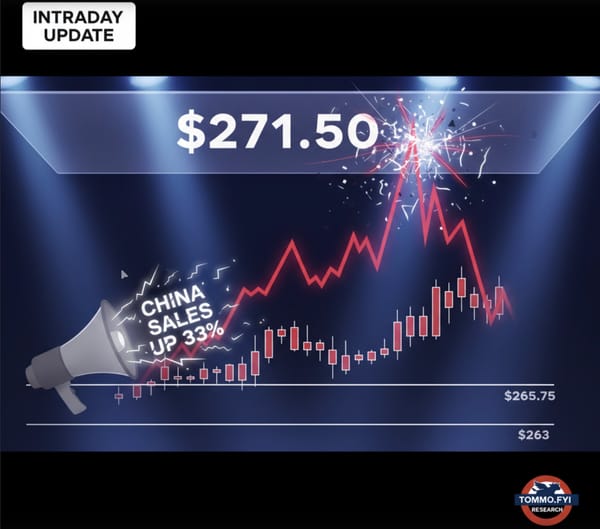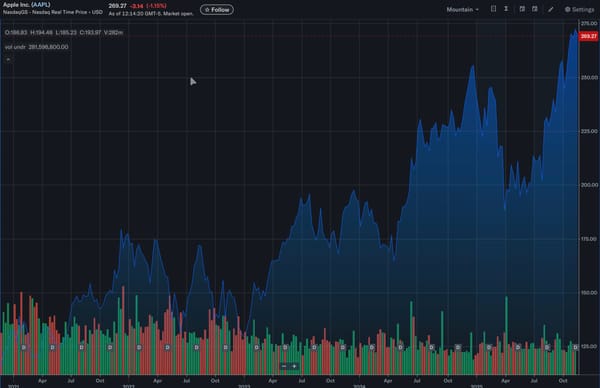Apple Pay: The Wallet That Never Opened. How Apple Fumbled the Future of Finance
Apple had the rails, the trust, and the devices. It could have built the most powerful financial platform on Earth. But instead of revolutionising money, it sent us a credit card—via Goldman Sachs.

Introduction: The Empire That Wasn’t
Apple was holding the ace. A generational opportunity to rewrite the rules of consumer finance—not as a fintech copycat, but as a category rewriter. Over two billion devices. Trusted identity rails. Hardware, software, payments, security—all vertically integrated. It had what banks didn’t. What startups only dreamed of. What users desperately needed.
Instead, Apple launched a credit card. In one country. With Goldman Sachs, of all people, more often called "The Giant Vampire Squid." Talk about doing a deal with the devil.
This wasn’t innovation. It was insulation. A financial product designed for a premium few, ignoring the billions for whom credit is unnecessary, unavailable, or undesirable. Where there could’ve been access, there was exclusivity. Where there could’ve been ecosystem, there was a moat.
It didn’t have to be this way.
Apple’s Competitive Moat Was Already Built
Let’s count the weapons Apple had in its arsenal:
- Biometrically secured devices in nearly every pocket.
- Apple IDs functioning as global, verified identities.
- Apple Pay accepted nearly everywhere contactless payments are.
- Ecosystem access across iMessage, Siri, Wallet, Maps, and App Store.
"Apple Pay is the only fintech product you already own."
Apple didn’t need to copy Revolut. It didn’t need to chase PayPal. It had the distribution. It had the trust. What it lacked was the courage or imagination to democratise its financial power.
The Apple Card proved the opposite: exclusive, US-only, credit-based, and cosigned by the banker of the 1%. That was the moment Apple showed it was more interested in frictionless optics than frictionless finance.
Meanwhile, the world moved on.
Revolut, PayPal, Goldman Sachs: The Missed Triangulation
Revolut scaled quickly on services Apple already had the tools to build:
- Multi-currency accounts, global availability
- Fee-transparent FX
- Debit-first access
- An incredible array of benefits and subscription tiers.
- Crypto (yes, Apple wouldn’t touch it—but users still wanted it)Meanwhile, - PayPal expanded into small business payments, buyer protection, and creator commerce.
So while Apple Pay stood still, fintech sprinted:
• Revolut launched borderless accounts, live FX, crypto wallets, investing dashboards, dual accounts, gig worker accounts.
• Cash App made P2P payments as fluid as texting.
• Venmo became a verb.
• WeChat and AliPay turned China cashless.
• Meta tried (and failed) to launch a currency, but they tried.
"Apple built the payment rail. But it never built the train."
What makes this inertia unforgivable is Apple’s advantage. No other company has:
- A 2B+ device install base
- Biometrically secured identity in every hand
- Active in over 70 countries
- Used by billions of people
- Embedded in every iPhone, iPad, Mac, and Apple Watch
- Secured by hardware, biometrics, tokenisation, and trust
- Integrated with transit, loyalty, ticketing, and more
Goldman Sachs, Apple’s own partner, launched Marcus, a savings account platform with 5x the flexibility of Apple Cash. Even Apple’s allies were innovating faster.
And Apple? It had the fingerprint, the device, and the cash flow—and chose none of it. In fact, the relationship with Goldman Sachs was so bad, Goldman tried to ditch the card and the contract with Apple. The truth is, Apple didn't need Goldman to do this. They had the stack, they could have done this alone.

"Apple could’ve played as the referee. Instead, it walked onto the field in a tuxedo and refused to run."
Mass-Market Luxury: The Product That Could Have Defined a Decade
Let’s be clear: Apple Pay isn’t a failure. It’s one of the most widely used mobile payment systems in the world
"Apple Pay is the only fintech product that doesn’t need you to download it."
In the US, Apple Card proved they could go deeper—credit, cash back, visual spend tracking, the whole UX dream. But it remained domestic. The rest of the world? Still left juggling banks, apps, delays, and fragmentation.
This is where Apple truly missed the leap. A debit-based wallet product could have redefined financial dignity—not by chasing the lowest common denominator, but by elevating every tier of user into the Apple ecosystem.
Call it what it is: mass-market luxury. Premium utility, available to all.
Imagine a student in Mumbai, a gig worker in Lagos, a grandmother in Warsaw—all with access to an Apple Debit account that gave them:
- Secure, instant global transactions
- Localised benefits and discounts
- A financial identity they could trust—and grow with
"This isn’t about ‘servicing the unbanked.’ It’s about pulling humanity into a common digital economy—on Apple’s terms, but with their dignity intact."
Apple has always sold aspiration. This would have sold belonging.
The Apple Debit account could have offered:
- Basic access for free, frictionless functionality
- Add-on tiers à la Apple One: savings automation, insurance, international FX, budgeting tools, even micro-loans or AppleCare for life emergencies
- Instant benefits from being inside the ecosystem: App Store bundles, Apple TV+ offers, Genius Bar priority, event invites, loyalty multipliers
It wouldn’t dilute the brand. It would extend it. A new kind of product—one that treats access as value, not cost.
What Apple Still Has Time to Build
Apple ID as Global P2P Layer
Send funds globally like an AirDrop. Real-time, encrypted, currency-smart. No need for IBANs or third-party apps.
Creator-First Financial Rails
QR payments. Tips. Lightweight invoicing. Audio-message payment links. The iPhone is already the studio—Wallet should be the label.
Multi-Currency, FX, and Travel-Aware Wallet
Auto-convert, hold multiple currencies, geosync FX rates to your location. Let Wallet travel with you without needing another app. No fees.
Behaviour-Aware Budgeting
Insights like Apple Health: discreet, ambient, and nudge-based.
- “You’re 15% over your coffee spend this week.”
- “You saved £30 last month by walking instead of taking Uber.”
- "Your balance is going to be too low for your subscription to Vestager's Hot Tub app to be processed." Please top up, or convert Apple Pips into cash.
Apple Debit With Instant Spendability
No waiting to transfer funds. Earn via P2P, spend instantly. Wallet becomes your checking account—without the checking.
"This isn’t a wishlist. It’s Apple’s product-market fit, already waiting for execution."
Why Apple Flinched
Because Apple doesn’t want to be a bank. But it doesn’t need to be. It already owns trust. All it had to do was distribute it. It already runs a virtual bank. It has the entire technology stack and integratio into payment services to do this overnight.
Instead:
- It outsourced a premium credit card you have to keep in a special leather cover so the titanium doesn't stain, to Goldman Sachs
- Hid services behind the US border
- Prioritised credit over access
- Rejected the risk of leading in favour of the illusion of safety
"Apple didn’t miss the fintech wave. It declined the invitation."
The Opportunity: Money As Platform, Not Perk
Apple already mastered the art of bundling services: iCloud, Music, Arcade, Fitness, News. Why stop at lifestyle? Why not offer modular financial tooling the same way? With Apple Pay, it all but does. What a way to put the capstone on the ecosystem!

Base layer: Free debit card with Apple ID and instant Wallet integration
- Add-ons:
- AppleCare-style microinsurance
- Travel and FX packages
- Family safety bundles (spend alerts, limits, shared goals)
- Premium loyalty tier with retail, App Store, and event perks
- "Apple pips" - spending points redeemable against Apple products and through the Apple Store or App Store
"Apple isn’t late to the future of finance. It’s holding the master key and refusing to turn it."
This wouldn’t be Apple as bank. It would be Apple as infrastructure. And once embedded in the world’s transactions—secure, private, reward-rich—it wouldn’t just pull users in. It would never let them go, not because they were stuck in a walled garden but because with Apple's security, functionality, global reach and feature-set, ApplePay could offer what no other checking account could.
Conclusion: The Bank That Never Became
The infrastructure is already in our pockets. The users are already enrolled. The rails are laid, the UX polished, the brand bulletproof.
What’s missing is will.
Apple still has the chance to build the most powerful financial platform in the world—not by replacing banks, but by reframing money around dignity, clarity, and control, and democtratising it. Maybe even with their own crypto, to truly democratise money, backed by the enormous welath that is Apple's wealth, free cashflow, and moeny invested or on account.
It can still become the trust layer for global finance.
But the era of passivity is over.
"Regret is what happens when infrastructure is mistaken for strategy."
If Apple moves now, it can still own the future of money—not through exclusivity, but through elegance made universal. If you're looking for the "next big thing," like so many opportunies Apple have squandered, it's been there since forever, waiting, like Siri, for someone to notice and give a damn.
That vault is still unlocked. But Apple needs to open it. Or the "Best Mover Advantage" will be gone. Apple isn't always, first, but it can be best.




